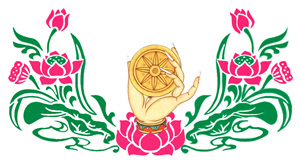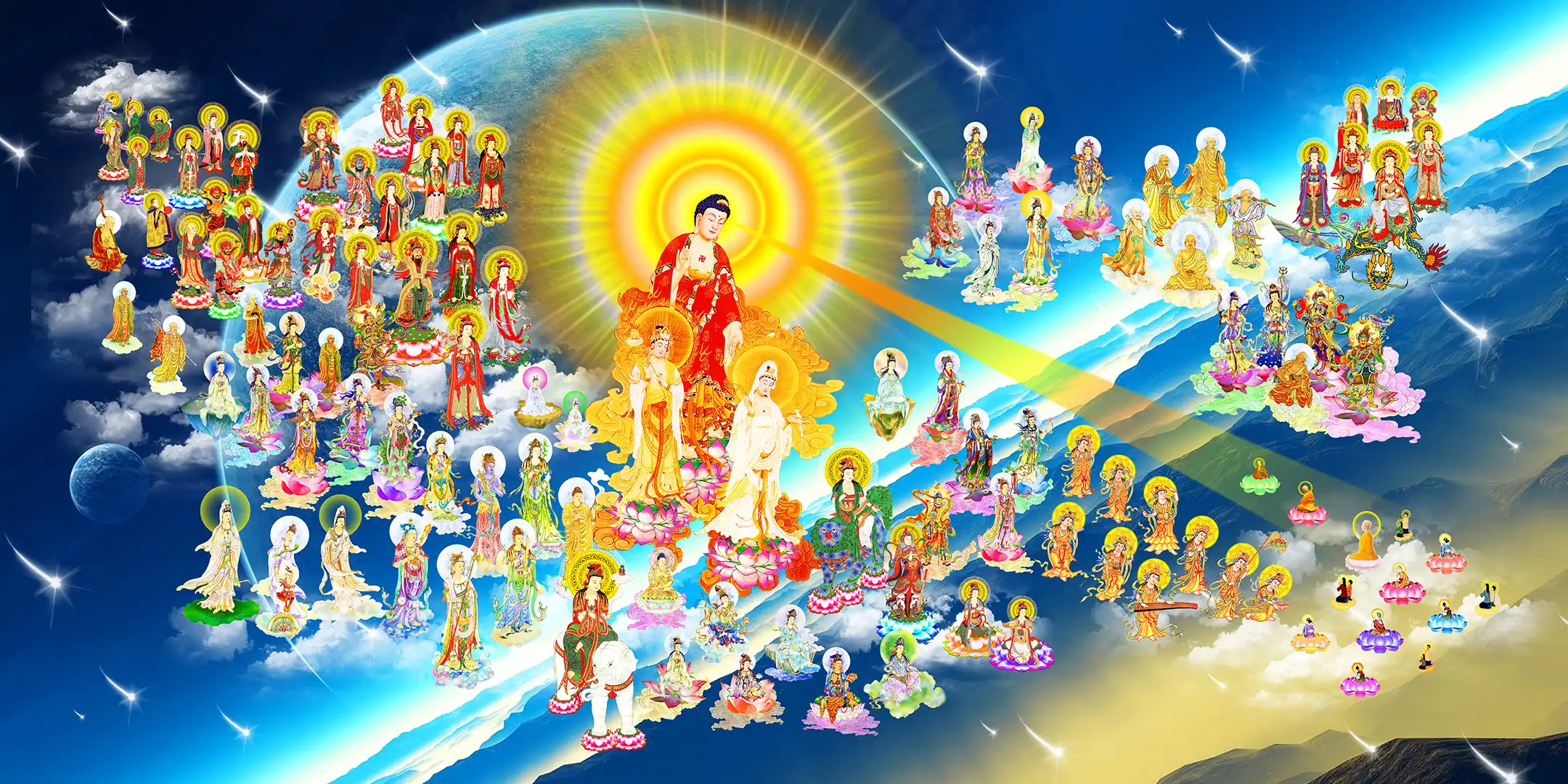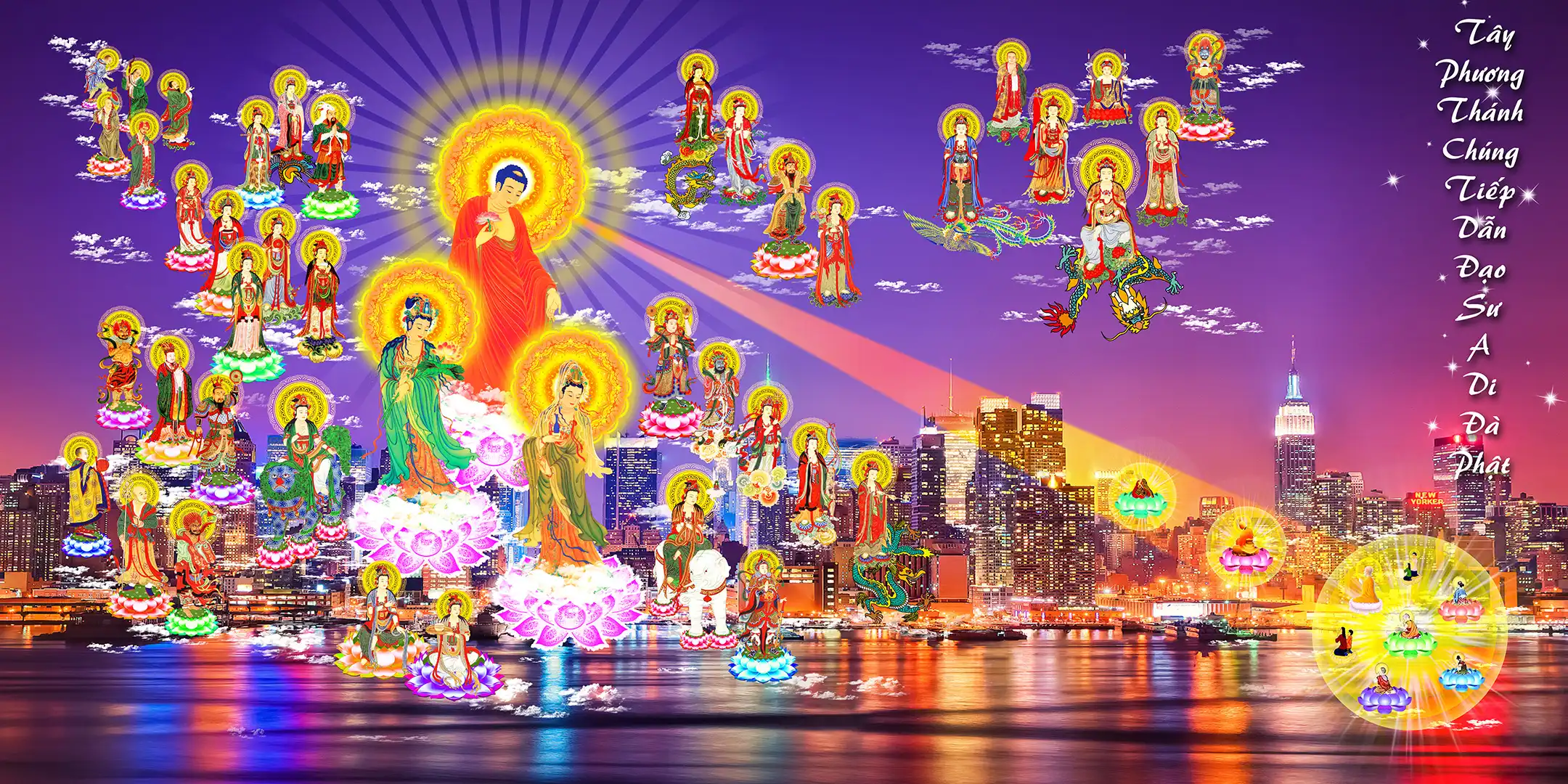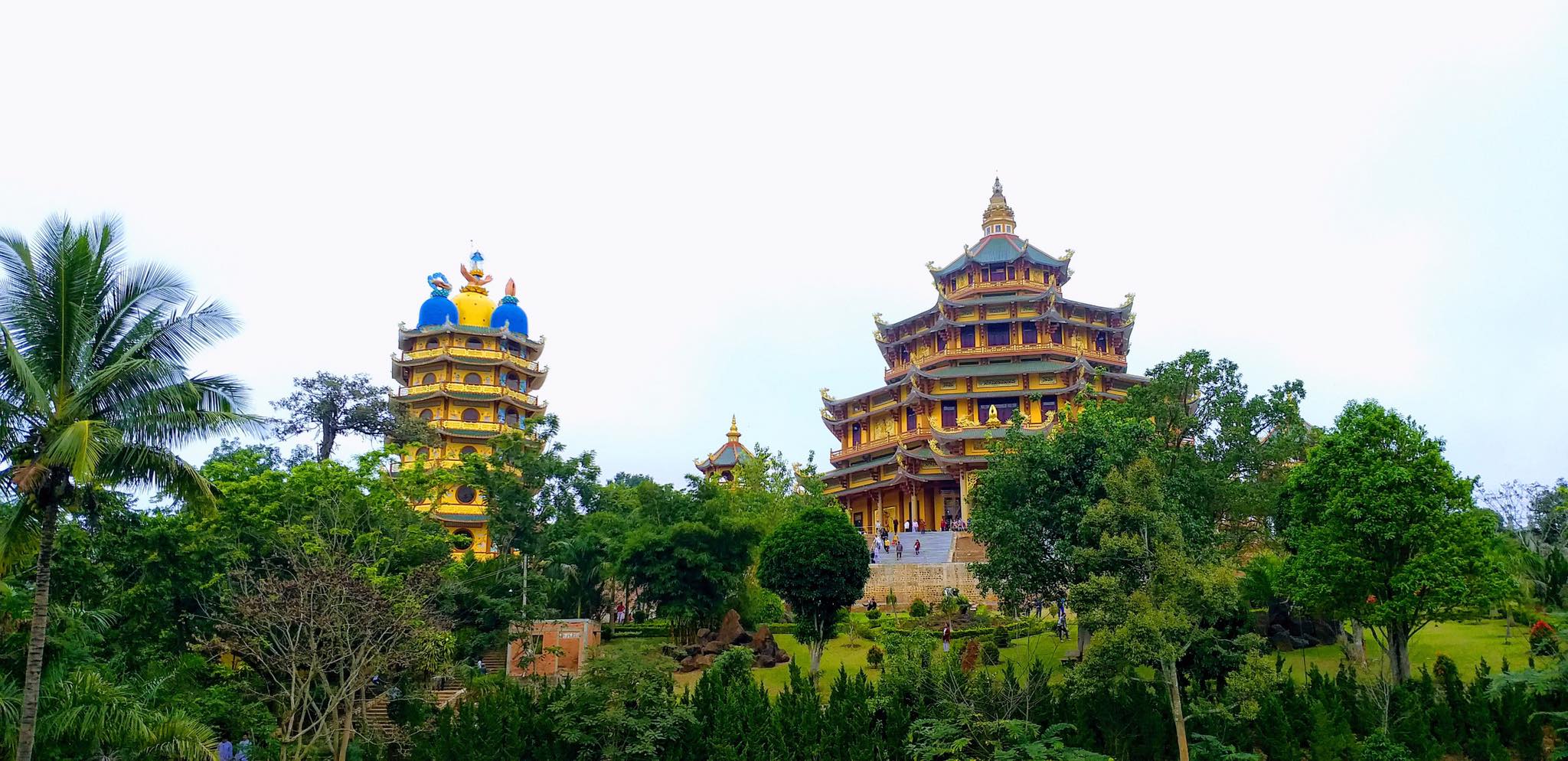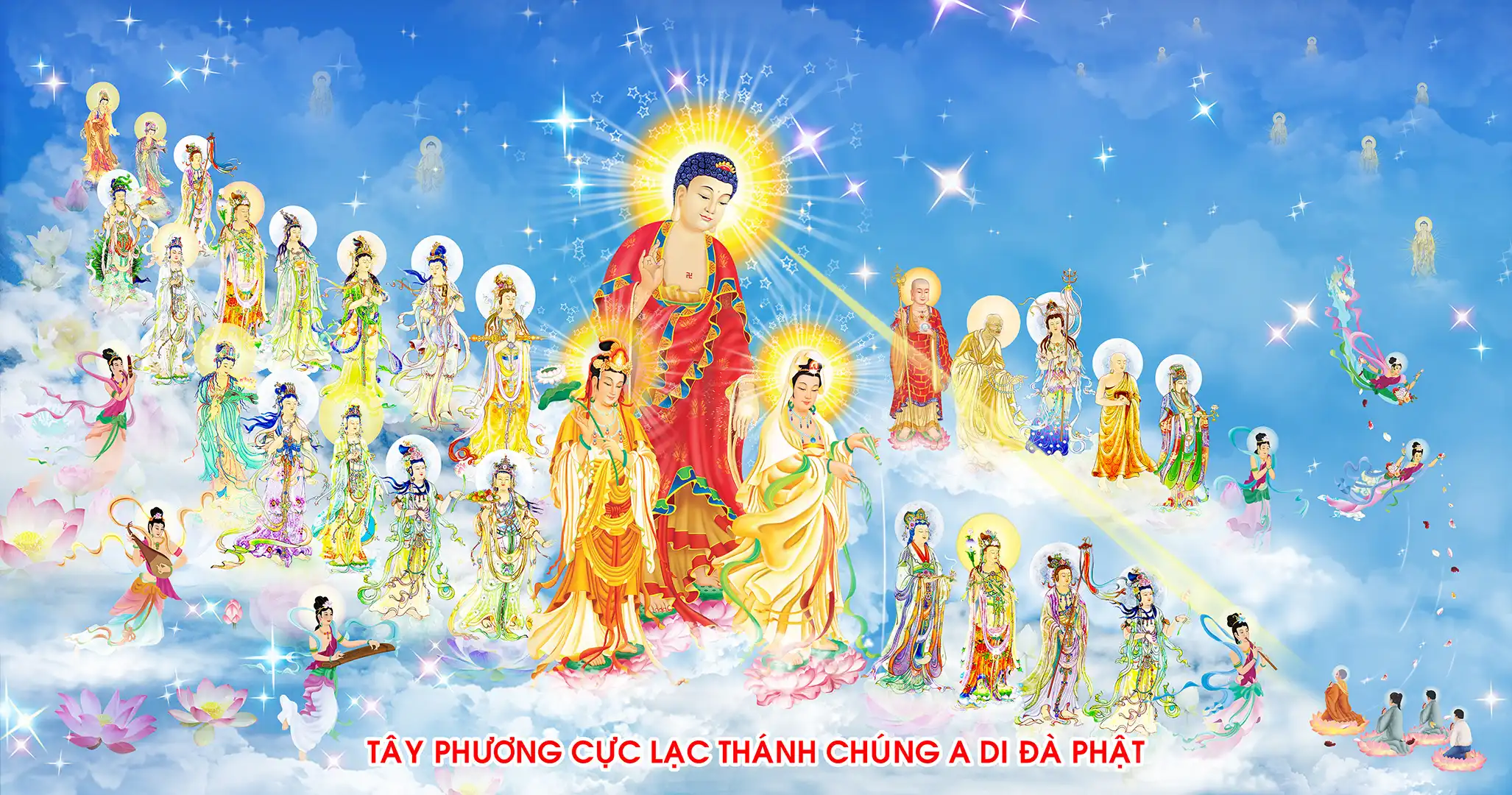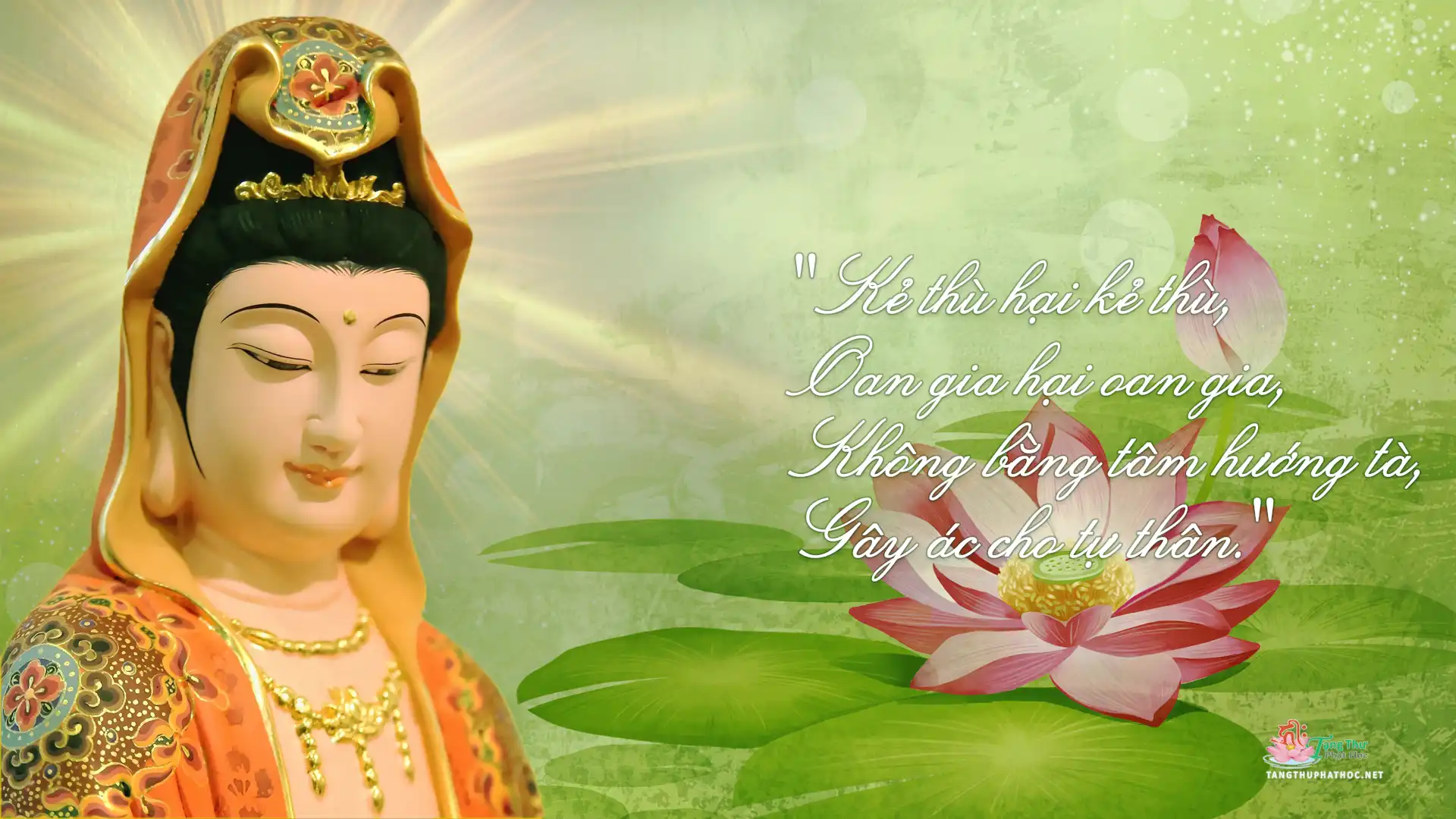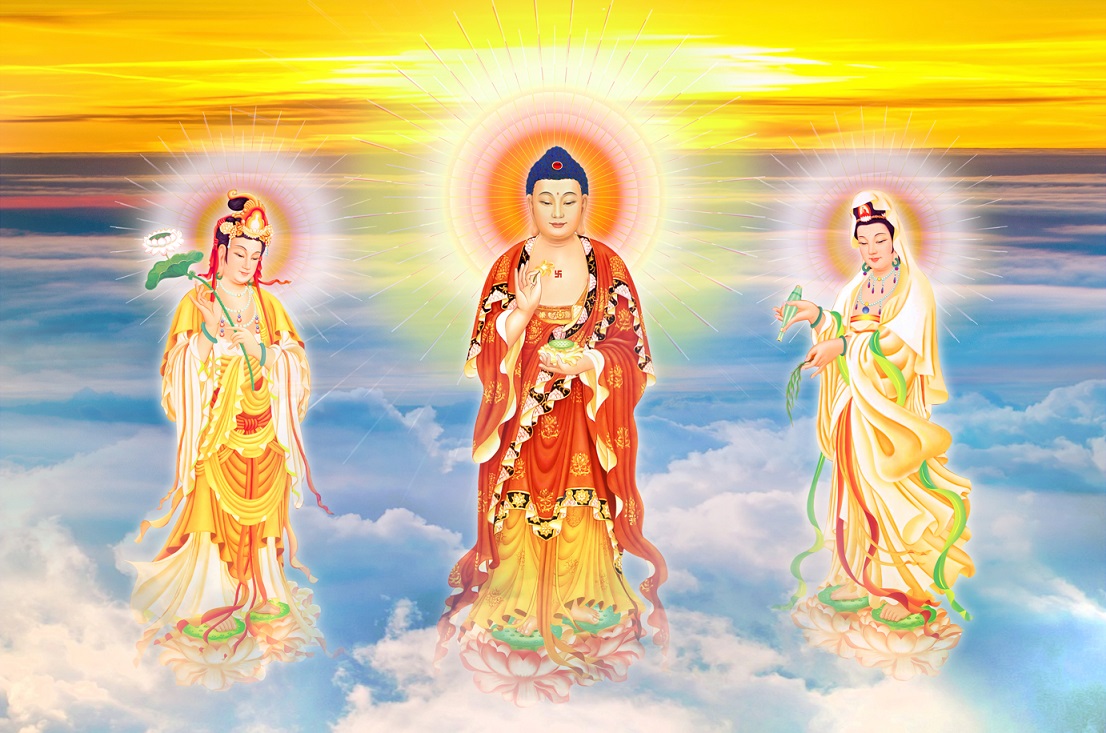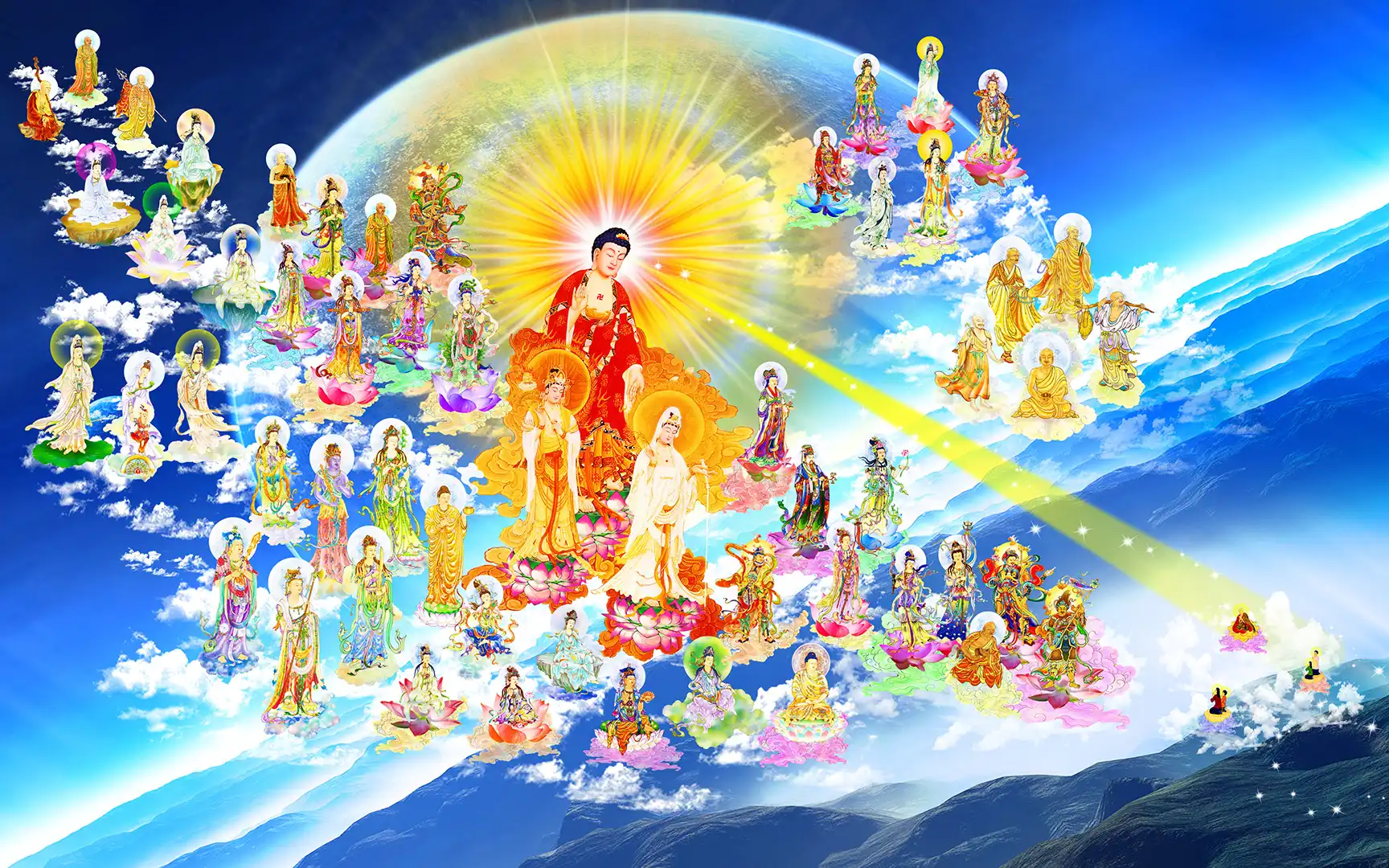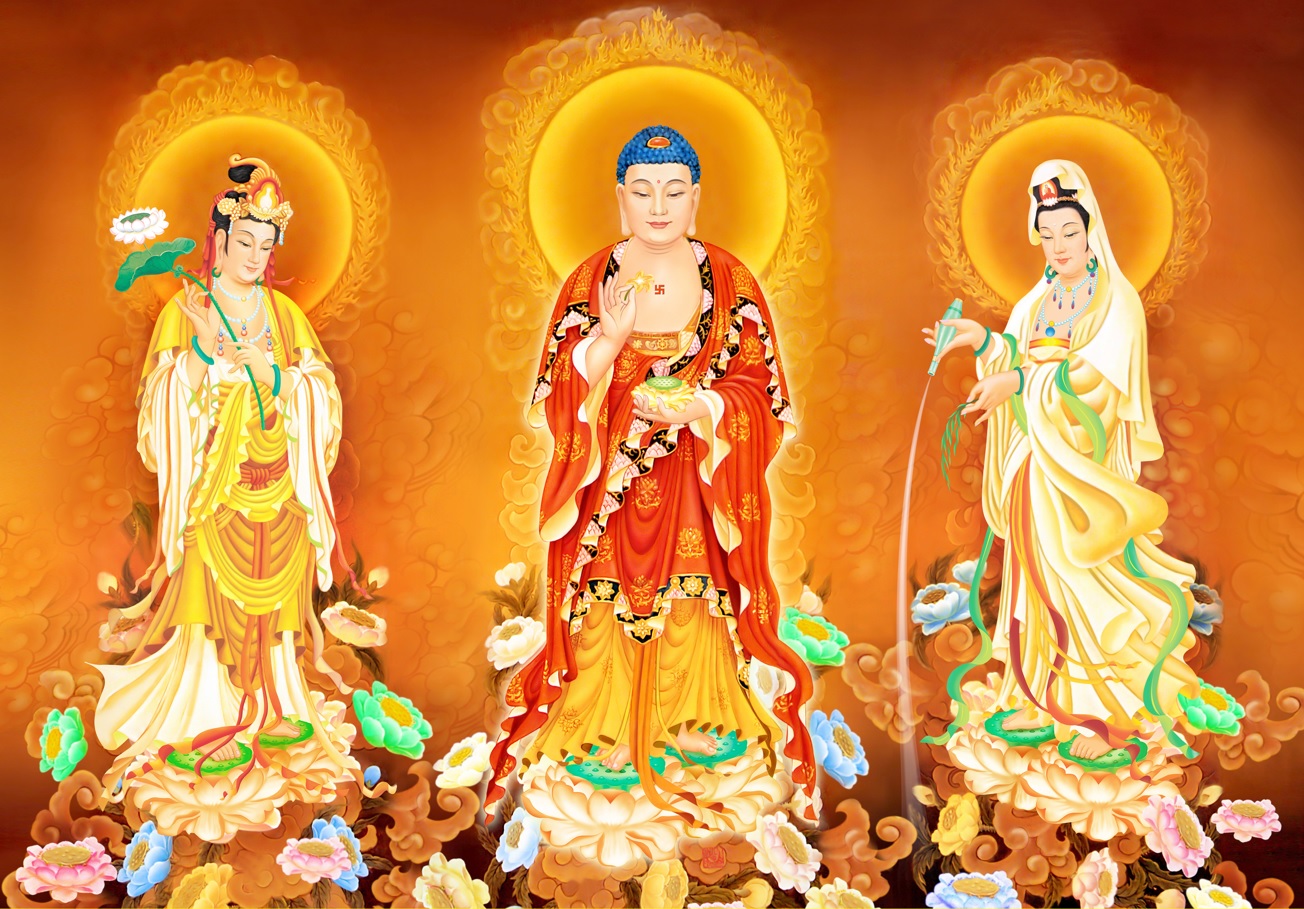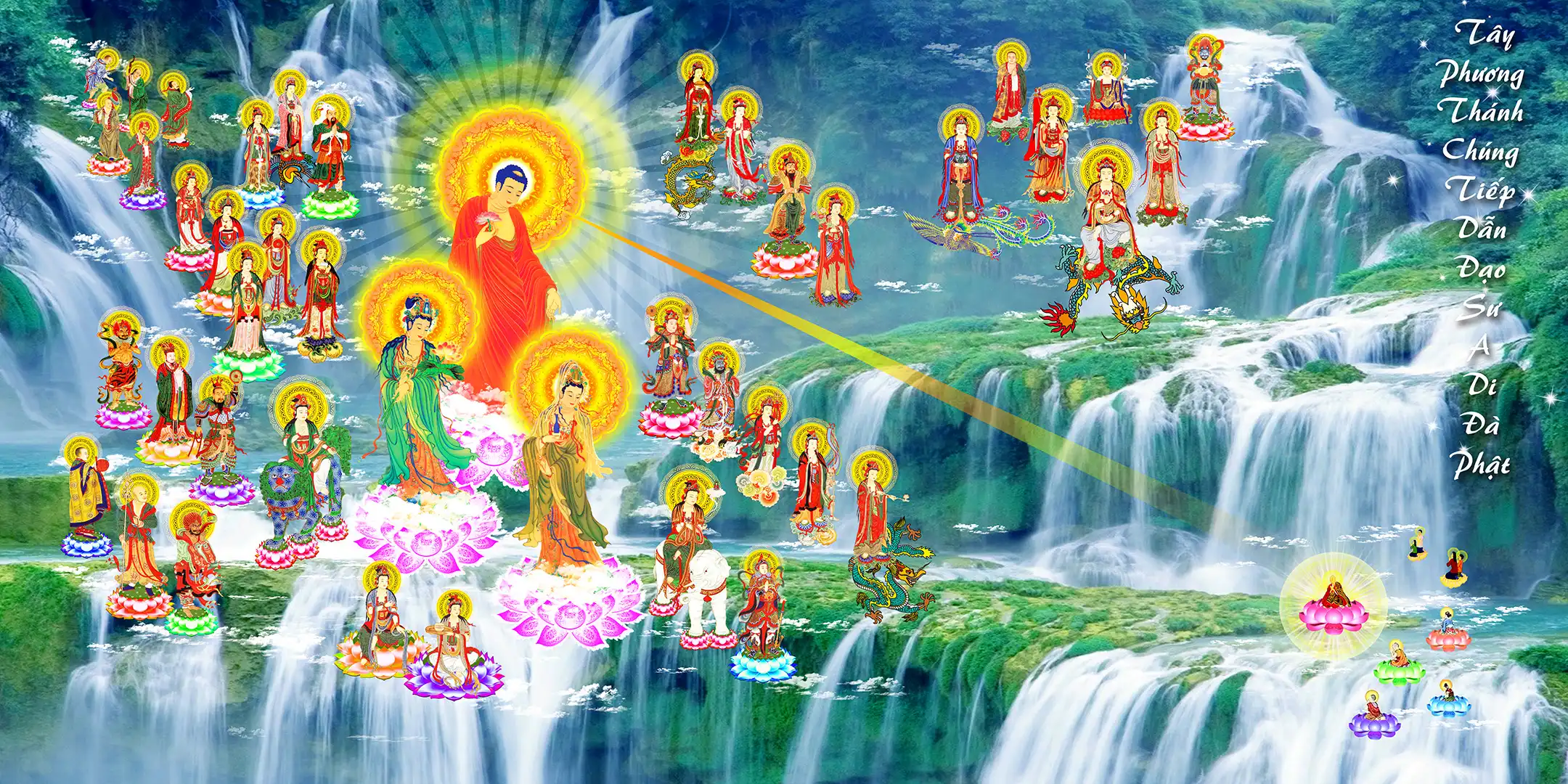THE SORROWLESS FLOWERS
Thiện Phúc
VOLUME I
81. Leakage
82. Cultivate More Good Deeds
83. To See the Real Nature of “Pride”
84. The State of Suffering of “Envy”
85. The Real Nature of Doubt
86. The Real Nature of “Wrong Views”
87. To Overcome Greed, Anger, and Jealousy 262
88. Heedlessness and Giving Free Rein to One’s Emotion
89. Selflessness
90. The Selflessness-Impermanence of All Things
81. Leakage
General meanings of leaking is an opening on the roof allows rain water to descend through it. In Buddhism, leakage means afflictions. Whatever is in the stream of births and deaths. Conditioned merits and virtues lead to rebirth within samsara. According to the Mahayana Buddhism, Asrava has the following meanings: taint, corruption, mania, anfatuation, addiction (to alcohol or drugs), defilement, and so on. Leaking (asrava) is some thing which oozes or flows out of the mind and spoils the upward career of the Buddhist life; to get rid of asrava is the aim of our cultivation. In the contrary, anasrava is a state free from these impurities. Leaking is also anything which serves to divert beings away from inherent Budha-nature. Outflows are so called because they are turning of energy and attention outward rather than inward. According to the Visuddhimagga (The Path of Purification), cankers, a term for greed for sense-desire, greed for becoming, wrong view, and ignorance, because of the exudingof these defilements from unguarded sense-doors like water from cracks in a pot in the sense of constant trickling, or because of their producing the suffering of the round of rebirths. First, the floods are so called in the sense of sweeping away into the ocean of becoming, and in the sense of being hard to cross. Second, the bonds are so called because they do not allow disengagement from an object and disengagement from suffering. Both “Floods” and “bonds” are terms for the “Cankers” already mentioned. According to Buddhism, leakage is the conditioned dharma which produces afflictions (passions and delusions). Whatever is in the stream of births and deaths. Even conditioned merits and virtues lead to rebirth within samsara. There are many kinds of outflows. Anger is an outflow, so are greed and ignorance. Outflows are the root of birth and death, and the reason for us not to end the cycle of birth and death is that we still have outflows.
Besides, in Buddhism there are other definitions that are related to Leaking. Leaking in precepts means to make a leak in the commandments, i.e. beak them. Karma of ordinary rebirth means the deeds of the sinner in the stream of transmigration, which produces his karma. Ending of leakage means the end of the passions or the exhaustion of the stream of transmigration. The assurance of ending of leakage means the assurance or realization that the stream of transmigration is ended and nirvana attained. The realization of ending of leakage means the realization that the stream of transmigration is ended. Another word, Nirvana insight into present mortal sufferings so as to overcome all passions or temptations, or the deliverance of mind from passions. The insight of ending of the leakage means the supernatural insight into the ending of the stream of transmigration, one of the six abhijnas. The wisdom of ending of the leakage means the wisdom of the arhat (all passions and afflictions ended). Ending-of-leakage Bhiksu means the monk who has ended the stream of transmigration, or the arhat. The mind of ending of the leakage means the passions ended and the mind freed, or the state of the arhat. The confidence of ending of the leakage means absolute confidence of Buddha that transmigration would cease forever.
There are two basic aspects of illusion. The first illusion is the illusion connected with views. These are perplexities or illusions and temptations arise from false views or theories. The second illusion is the illusion connected with thoughts. These illusions arise through contact with the world or by habit, such as desire, anger, infactuation, etc. Besides, there are also illusion connected with principles and illusion arising in practice. According to the T’ien-T’ai Sect, there are three delusions. The first illusion is connected with thoughts. Things seen and thought illusions from imperfect perception, with temptation to love, hate, etc., to be rid of these false views and temptations, one must cultivate and observe moral precepts. The second illusion is the illusion connected with affliction. Illusion and temptation through the immense variety of duties in saving others. The third illusion is the illusion connected with ignorance. Illusions and temptations that arise from failure philosophically to understand things in their reality. Illusion arising from primal ignorance which covers and hinders the truth. In the Differentiated Teaching, this illusion is overcome by the bodhisattva from the first stage; in the Perfect Teaching, it is overcome by the Bodhisattva in the first resting-place. According to the Hinayana Buddhism, there are three groups of delusions. The first illusion is the illusion connected with desires (kamasava p). Intoxicant of worldly desires or sensual pleasures. The second illusion is the illusion connected with existence (bhavasava p). The love of existence in one of the conditioned realms. The third illusion is the illusion connected with ignorance (avijjasava p). The defilements of ignorance in mind. Besides, some considers the fourth delusion: the corruption of views. According to The Connected Discourses of the Buddha, Chapter Esanavaggo (Searches), there are three affluences or taints that feed the stream of mortality or transmigration. The first illusion is the illusion connected with desires, or the taint of sensuality. The second illusion is the illusion connected with material or phenomenal existence, or the taint of existence. The third illusion is the illusion connected with ignorance (ignorance of the way of escape), or the taint of ignorance.
For these reasons, from the moment to moment Enlightening Beings enter absorption in extinction and exhaust all contamination, yet they do not experience ultimate reality and do not end roots of goodness with contamination; though they know all things are free from contamination, yet they know the end and extinction of contaminations; though they know the principles of Buddhas are identical to the things of the world, and the things of the world are identical to the principles of Buddhas, yet they do not form notions of worldly things within the principles of Buddhas, and do not form notions of principles of Buddhas in the things of the world. All things enter the realm of reality because there is nothing entered; they know all things are nondual because there is no change.
According to Bhikkhu Bodhi in Abhidhamma, there are sixty-three entities. There are four taints of the unwholesome: the taint of sensual desire, the taint of attachment to existence, the taint of wrong views, and the taint of ignorance. There are four floods: the flood of sensual desire, the flood of attachment to existence, the flood of wrong views, and the flood of ignorance. Four bonds: the bond of sensual desire, the bond of attachment to existence, the bond of wrong views, and the bond of ignorance. There are four bodily knots or ties: the bodily knot of covetousness, the bodily knot of ill-will, the bodily knot of adherence to rites and ceremonies, and the bodily knot of dogmatic belief that “This alone is the truth.” Four bodily clingings: clinging to sense pleasures, clinging to wrong views, clinging to rites and ceremonies, and clinging to a doctrine of self. Six hindrances: the hindrance of sensual desire, the hindrance of ill-will, the hindrance of sloth and torpor, the hindrance of restlessness and worry, the hindrance of doubt, and the hindrance of ignorance. Seven latent dispositions: sensual lust, attachment to existence, aversion, conceit, wrong views, doubt, and ignorance. Ten fetters, acording to the Suttanta method: the fetter of sensual lust, attachment to fine-material existence, attachment in immaterial existence, the fetter of aversion, the fetter of conceit, the fetter of wrong views, adherence to rites and ceremonies, the fetter of doubt, the fetter of restlessness, and the fetter of ignorance. Ten fetters, according to the Abhidhamma: the fetter of sensual lust, attachment to existence, the fetter of aversion, the fetter of conceit, the fetter of wrong views, adherence to rites and ceremonies, the fetter of doubt, the fetter of envy, the fetter of avarice, and the fetter of ignorance. Ten defilements: the defilement of Greed, the defilement of Hatred, the defilement of Delusion, the defilement of Conceit, the defilement of Wrong views, nghi hoặc: the defilement of Doubt, the defilement of Sloth, the defilement of restlessness, and the defilement of shamelessness.
82. Cultivate More Good Deeds
Good deeds can be going to a temple to do good deeds there, but good deeds can be what we do to make others happier or moraler so that they can come closer to enlightenment and emancipation. Devout zen practitioners should always remember that before entering meditation practices, we should do a lot of good deeds, for the level of mind stillness depends not only on methods of zen, but also greatly depends the good deeds that we accomplished. If we are not completely emancipated, our happiness in meditation also synonymous with the happiness that we did for others. Therefore, a zen practitioner must be the one who always gives the happiness, peace, and mindfulness to others all his life. In other words, deside the effort for meditation, zen practitioners should always try to do many good deeds, for good deeds will support meditation result very well.
83. To See the Real Nature of “Pride”
Pride is the inflated opinion of ourselves and can manifest in relation to some good or bad object. When we look down from a high mountain, everyone below seems to have shrunken in size. When we hold ourselves to be superior to others, and have an inflated opinion of ourselves, we take on a superior aspect. It is extremely difficult to develop any good qualities at all when one has pride, for no matter how much the teacher may teach that person, it will do no good. Haughtiness means false arrogance, thinking oneself correct in spite of one’s wrong conduct, thinking oneself is good in spite of one’s very bad in reality. Haughtiness also means arrogance and conceit due to one’s illusion of having completely understood what one has hardly comprehended at all. Haughtiness is one of the main hindrances in our cultivation. Zen will help us to possess a genuine wisdom which is necessary for our cultivation. Those who have genuine wisdom never praise themselves and disparage others. These people never consider themselves the purest and loftiest, and other people common and lowly. In Buddhism, those who praise themselve have no future in their cultivation of the Way. Even though they are still alive, they can be considered as dead, for they have gone against their own conscience and integrity.
84. The State of Suffering of “Envy”
Devout Buddhists should always remember that envy is generated by one’s feeling of inferiority, while pride, haughtiness, and arrogance are born from a false sense of superiority. These kinds of pride and arrogance are caused by looking at things from a distorted, self-centered point of view. Those who have truly understood the Buddha’s teachings and been able to obtain a right view of things will never succumb to such warped thinking. Jealousy means to be jealous of another person thinking he or she has more talent than we do (to become envious of the who surpass us in one way or other). Jealousy can be a consuming fire in our mind, a state of suffering. In meditation, if we want to eliminate jealousy, we should see and feel it without judgment or condemnation for judgment and condemnation only nourish jealousy in our mind.
85. The Real Nature of Doubt
Doubt signifies spiritual doubt, from a Buddhist perspective the inability to place confidence in the Buddha, the Dharma, the Sangha, and the training. Doubt is one of the five hindrances one must eliminate on entering the stream of saints. In fact, one who suffers from perplexity is really suffering from a dire disease, and unless he sheds his doubts, he will continue to worry over and suffer from this illness. As long as man is subject to this mental itch, this sitting on the fence, he will continue to take a skeptical view of things which is most detrimental to mental ability to decide anything definitely; it also includes doubt with regard to the possibility of attaining the jhanas. However, doubting is natural. Everyone starts with doubts. We can learn a great deal from them. What is important is that we do not identify with our doubts. That is, do not get caught up in them, letting our mind spin in endless circles. Instead, watch the whole process of doubting, of wondering. See who it is that doubts. See how doubts come and go. Then we will no longer be victimized by our doubts. We will step outside of them, and our mind will be quiet. We can see how all things come and go. Let go of our doubts and simply watch. This is how to end doubting.
86. The Real Nature of “Wrong Views”
In Buddhism, Improper views or Wrong views means not recognizing the doctrine of normal karma. Perverted (wrong) views or opinions, not consistent with the dharma, one of the five heterodox opinions and ten evils. In fact, there is no specific definition for the term “wrong views” (micchaditthi) in Buddhism. During the Buddha’s time, the Buddha confirmed his disciples that even the validity of the Buddha’s own statements could be questioned.” The Buddha claimed no authority for his doctrine except his own experience. Perverted (wrong) views or opinions arises from a misconception of the real characteristic of existence. There were at least sixty-two heretical views (views of the externalist or non-Buddhist views) in the Buddha’s time. Buddhism emphasizes on theory of causation. Understanding the theory of causation means to solve most of the question of the causes of sufferings and afflictions. Not understanding or refuse of understanding of the theory of causation means a kind of wrong view in Buddhism. According to the Buddha, sentient beings suffer from sufferings and afflictions because of dersires, aversions, and delusion, and the causes of these harmful actions are not only from ignorance, but also from wrong views. Through Zen, we can see that holding wrong views involves vigorously and hostilely denying the existence of such things as past and future lives, the possibility of attaining Nirvana. Wrong views mean the false belief that the skandhas, or constituents of personality, contain an immortal soul. False view also means seeing wrongly. Its characteristic is unwise or unjustified interpretation or belief. Its function is to preassume. It is manifested as a wrong interpretation or belief. Its proximate cause is unwillingness to see the noble ones. Holding wrong views in Buddhism involves vigorously and hostilely denying the existence of such things as past and future lives, the possibility of attaining nirvana, the existence of the Buddhas, Dharma and Sangha. Doubt about these subjects does not constitute wrong views; however, if we neglect to resolve our doubts by asking questions and investigating these issues, we could later generate wrong views by believing in deceptive doctrines.
87. To Overcome Greed, Anger, and Jealousy
To refrain from greed, anger, jealousy, and other evil thoughts to which people are subject, we need strength of mind, strenuous effort and vigilance. When we are free from the city life, from nagging preoccupation with daily life, we are not tempted to lose control; but when we enter in the real society, it becomes an effort to check these troubles. Meditation will contribute an immense help to enable us to face all this with calm. There are only two points of divergence between the deluded and the enlightened, i.e., Buddhas and Bodhisattvas: purity is Buddhahood, defilement is the state of sentient beings. Because the Buddhas are in accord with the Pure Mind, they are enlightened, fully endowed with spiritual powers and wisdom. Because sentient beings are attached to worldly Dusts, they are deluded and revolve in the cycle of Birth and Death. To practice Pure Land is to go deep into the Buddha Recitation Samadhi, awakening to the Original Mind and attaining Buddhahood. Therefore, if any deluded, agitated thought develops during Buddha Recitation, it should be severed immediately, allowing us to return to the state of the Pure Mind. This is the method of counteracting afflictions with the meditating mind.
88. Heedlessness and Giving Free Rein to One’s Emotion
The Buddha knows very well the mind of human beings. He knows that the foolish indulge in heedlessness, while the wise protect heedfulness. So he advises the wise with right effort, heedfulness and discipline to build up an island which no flood can overflow. Who is heedless before but afterwards heedless no more, will outshine this world, like a moon free from clouds. To the Buddhas, a person who has conquered thousands of thousands of people in the battlefield cannot be compared with a person who is victorious over himself because he is truly a supreme winner. A person who controls himself will always behave in a self-tamed way. And a self well-tamed and restrained becomes a worthy and reliable refuge, very difficult to obtain. A person who knows how to sit alone, to sleep alone, to walk alone, to subdue oneself alone will take delight in living in deep forests. Such a person is a trustworthy teacher because being well tamed himself, he then instructs others accordingly. So the Buddha advises the well-tamed people to control themselves. Only the well tamed people, the heedful people, know the way to stop contentions, quarrels and disputes and how to live in harmony, in friendliness and in peace.
To overcome the heedlessness, before practicing meditation, devout Buddhists should always remember the Buddha’s teachings in the Dharmapada Sutra. One who conquers himself is greater than one who is able to conquer a thousand men in the battlefield. Self-conquest is, indeed, better than the conquest of all other people. To conquer onself, one must be always self-controlled and disciplined one’s action. Oneself is indeed one’s own saviour, who else could be the saviour? With self-control and cultivation, one can obtain a wonderful saviour. Whoever was formerly heedless and afterwards overcomes his sloth; such a person illuminates this world just like the moon when freed from clouds. Before teaching others, one should act himself as what he teaches. It is easy to subdue others, but to subdue oneself seems very difficult. He who sits alone, sleeps alone, walks and stands alone, unwearied; he controls himself, will find joy in the forest. You are your own protector. You are your own refuge. Try to control yourself as a merchant controls a noble steed.
89. Selflessness
Buddhism teaches that human beings’ bodies are composed of five aggregates, called skandhas in Sanskrit. If the form created by the four elements is empty and without self, then human beings’ bodies, created by the unification of the five skandhas, must also be empty and without self. Human beings’ bodies are involved in a transformation process from second to second, minute to minute, continually experiencing impermanence in each moment. By looking very deeply into the five skandhas, we can experience the selfless nature of our bodies, our passage through birth and death, and emptiness, thereby destroying the illusion that our bodies are permanent. In Buddhism, no-self is the most important subject for meditation. By meditating no-self, we can break through the barrier between self and other. When we no longer are separate from the universe, a completely harmonious existence with the universe is created. We see that all other human beings exist in us and that we exist in all other human beings. We see that the past and the future are contained in the present moment, and we can penetrate and be completely liberated from the cycle of birth and death. Anatman in Sanskrit means the impersonality, insubstantiality, or not-self. The doctrine of no-self has two main characteristics: selflessness of things (dharma-nairatmya) and selflessness of person (pudgalanairatmya). Sometimes, the teaching of “not-self” causes confusion and misunderstanding. Any time we speak, we do say “I am speaking” or “I am talking”, etc. How can we deny the reality of that “I”? Sincere Buddhists should always remember that the Buddha never asked us to reject the use of the name or term “I”. The Buddha himself still use a word “Tatathata” to refer to himself, no matter what is the meaning of the word, it is still a word or a name. When the Buddha taught about “not-self”, he stressed on the rejection of the idea that this name or term “I” stands for a substantial, permanent and changeless reality. The Buddha said that the five aggregates (form, feeling, perception, volition and consciousness) were not the self and that the self was not to be found in them. The Buddha’s rejection of the self is a rejection of the belief in a real, independent, permanent entity that is represented by the name or term “I”, for such a permanent entity would have to be independent, permanent, immutable and impervious to change, but such a permanent entity and/or such a self is nowhere to be found. When Sakyamuni Buddha put forth the notion of “no-self,” he upsets many concepts about life in the universe. He blasted our most firm and widespread conviction, that of a permanent self. Those who understand “not self” know that its function is to overthrow “self,” not to replace it with a new concept of reality. The notion of “not self” is a method, not a goal. If it becomes a concept, it must be destroyed along with all other concepts.
Zen practitioners should always remember about the No-self of “Body-Mind-Environment”. No-Self means that there is no self, no permanent nature per se and that we are not true masters of ourselves. This point, too, is divided into the no-self body, the no-self mind, and the no-self environment. The no-self body means that this body is illusory, not its own master. It cannot be kept eternally young or prevented from decaying and dying. Even gods and immortals can only postpone death for a certain period of time. The no-self of mind refers to the deluded mind of sentient beings, which has no permanent nature. For example, the mind of greed, thoughts of sadness, anger, love, and happiness suddenly arise and then disappear, there is nothing real. No-self of environment means that our surroundings are illusory, passive and subject to birth and decay. Cities and towns are in time replaced by abandoned mounds, mulberry fields soon give way to the open seas, every single thing changes and fluctuates by the second, one landscape disappears and another takes its place.
The Buddha used the following analysis to prove that the self is nowhere to be found either in the body or the mind. The body is not the self, for if the body were the self, the self would be impermanent, would be subject to change, decay, destruction, and death. Hence the body cannot be the self. The self does not possess the body, in the sense that I possess a car or a television, because the self cannot control the body. The body falls ill, gets tired and old against our wishes. The body has an appearance, which often does not agree with our wishes. Hence in no way does the self possess the body. The self does not exist in the body. If we search our bodies from top to bottom, we can find nowhere locate the so-called “Self”. The self is not in the bone or in the blood, in the marrow or in the hair or spittle. The “Self” is nowhere to be found within the body. The body does not exist in the self. For the body to exist in the self, the self would have to be found apart from the body and mind, but the self is nowhere to be found. The mind is not the self because, like the body, the mind is subject to constant change and is agitated like a monkey. The mind is happy one moment and unhappy the next. Hence the mind is not the self because the mind is constantly changing. The self does not possess the mind because the mind becomes excited or depressed against our wishes. Although we know that certain thoughts are wholesome and certain thoughts unwholesome, the mind pursues unwholesome thoughts and is different toward wholesome thoughts. Hence the self does not possess the mind because the mind acts independently of the self. The self does not exist in the mind. No matter how carefully we search the contents of our minds, no matter how we search our feelings, ideas, and inclinations, we can nowhere foind the self in the mind and the mental states. The mind does not exist in the self because again the self would have to exist apart from the mind and body, but such a self is nowhere to be found.
We should reject the idea of a self for two reasons: 1) As long as we still cling to the self, we will always have to defend ourselves, our property, our prestige, opinions, and even our words. But once we give up the belief in an independent and permanent self, we will be able to live with everyone in peace and pleasure. 2) The Buddha taught: “Understanding not-self is a key to great enlightenment for the belief in a self is synonymous with ignorance, and ignorance is the most basic of the three afflictions (greed, anger, and stupidity). Once we identify, imagine, or conceive ourselves as an entity, we immediately create a schism, a separation between ourselves and the people and things around us. Once we have this conception of self, we respond to the people and things around us with either attachment or aversion. That’s the real danger of the belief of a self. Thus, the rejection of the self is not only the key of the end of sufferings and afflictions, but it is also a key to the entrance of the great enlightenment.” Zen Practitioners should contemplate “No-self” in every step. Zen practitioners can comprehend these three characteristics by observing closely the mere lifting of the foot and the awareness of the lifting of the foot. By paying close attention to the movements, we see things arising and disappearing, and consequently we see for ourselves the impermanent, unsatisfactory, and non-self nature of all conditioned phenomena.
90. The Selflessness-Impermanence of All Things
To understand thoroughly the impermacence of all things, Zen practitioners should contemplate that all things in this world, including human life, mountains, rivers, and political systems, are constantly changing from moment to moment. This is called impermanence in each moment. Everything passes through a period of birth, maturity, transformation, and destruction. This destruction is called impermanence in each cycle. To see the impermanent nature of all things, we must examine this closely. Doing so will prevent us from being imprisoned by the things of this world. Buddhism teaches that human beings’ bodies are composed of five aggregates, called skandhas in Sanskrit. If the form created by the four elements is empty and without self, then human beings’ bodies, created by the unification of the five skandhas, must also be empty and without self. Human beings’ bodies are involved in a transformation process from second to second, minute to minute, continually experiencing impermanence in each moment. By looking very deeply into the five skandhas, we can experience the selfless nature of our bodies, our passage through birth and death, and emptiness, thereby destroying the illusion that our bodies are permanent. In Buddhism, no-self is the most important subject for meditation. By meditating no-self, we can break through the barrier between self and other. When we no longer are separate from the universe, a completely harmonious existence with the universe is created. We see that all other human beings exist in us and that we exist in all other human beings. We see that the past and the future are contained in the present moment, and we can penetrate and be completely liberated from the cycle of birth and death.
